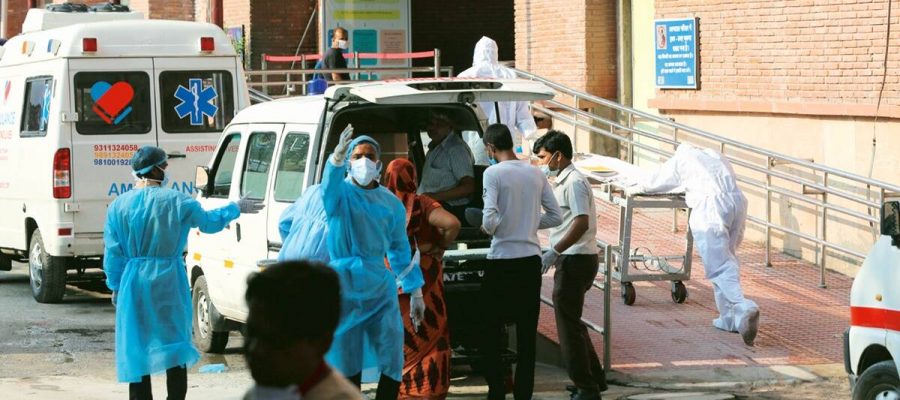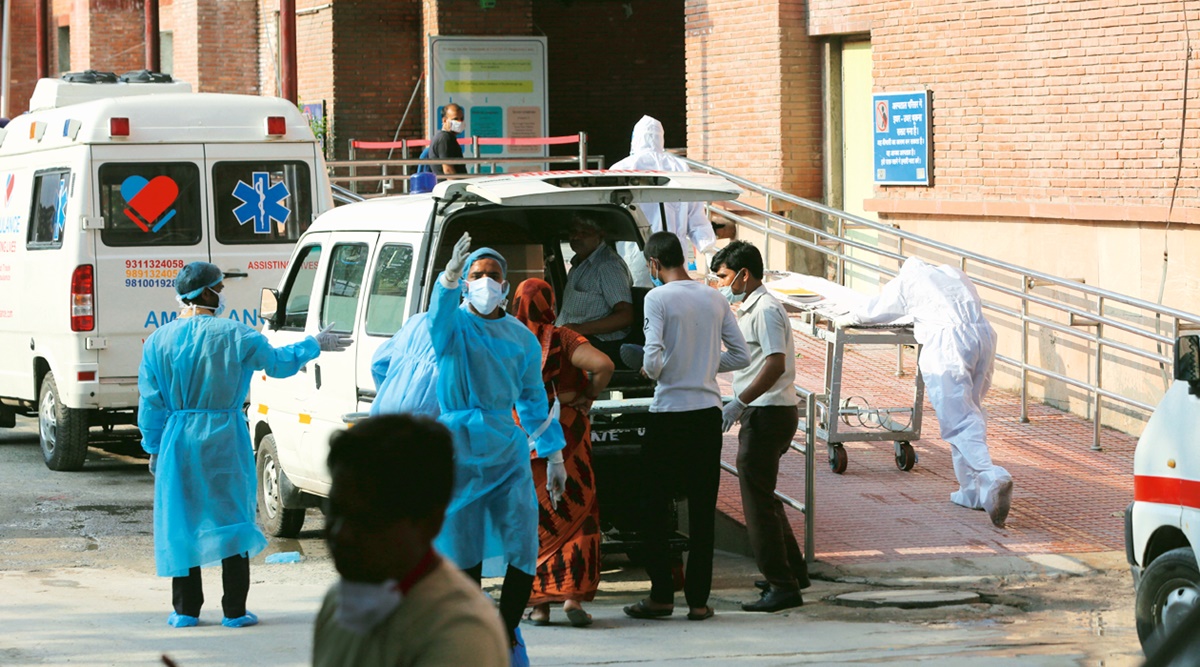According to Monday’s state health bulletin, at least 288 deaths were reported in the state in 24 hours, including 26 in Lucknow, 25 in Prayagraj, 21 in Jhansi, 19 in Gorakhpur and 17 each in Chanduli and Kanpur Nagar. These deaths pushed up the toll to 13,447.
Uttar Pradesh on Monday reported fewer than 30,000 Covid-19 cases (29,192 infections) in 24 hours for the first time in 12 days. With this, the patient count dropped to 2,85,832. The authorities, however, said they were concerned about the high number of fatalities and the disease spreading to rural areas.
According to Monday’s state health bulletin, at least 288 deaths were reported in the state in 24 hours, including 26 in Lucknow, 25 in Prayagraj, 21 in Jhansi, 19 in Gorakhpur and 17 each in Chanduli and Kanpur Nagar. These deaths pushed up the toll to 13,447. Senior BJP spokesperson Manoj Mishra was among the dead.
Doctors at the hospital in Kanpur where Mishra was being treated said the infection damaged his lungs.
While a high number of new cases continue to be reported from major districts such as Lucknow, Gautam Buddh Nagar (Noida), Moradabad, Kanpur Nagar, Varanasi, Saharanpur and Gorakhpur, the state government data suggests that several rural districts are continuously adding to the caseload.
In 24 hours, eight districts reported more than 1,000 infections – Lucknow (3,058 cases), followed by Gautam Buddh Nagar (1,446), Moradabad (1,404), Kanpur Nagar (1,311), Saharanpur (1,222), Gorakhpur (1,097), Amroha (1,082) and Varanasi (1,022). Eight districts – Prayagraj, Meerut, Ghaziabad, Bareilly, Jhansi, Muzaffarnagar, Shahjahanpur and Deoria – reported more than 500 new cases and 45 districts added 100 infections to the caseload.
At present, five major districts have over 10,000 patients, with capital Lucknow reporting an active caseload of 36,384. Eight districts have over 5,000 patients and 57 districts have an active caseload between 1,000 and 5,000. About 10 days ago, just 43 districts had over 1,000 active cases.
Last month, as the second wave started to gain momentum, state health officials appealed to people not to develop the misconception that the virus was spreading only in urban areas. Officials clarified that unlike the previous surge when only around one-fourth of the total cases used to be from rural areas, around half of the cases now were being reported in villages.
The government’s testing drive in all revenue villages will begin on Tuesday. On Sunday, while announcing the move, Adityanath said the situation in rural areas was a matter of huge concern and directed officials to protect villagers “at any cost”.
Source: Read Full Article


